Movement Automythography | Name Mequitta Ahuja | |
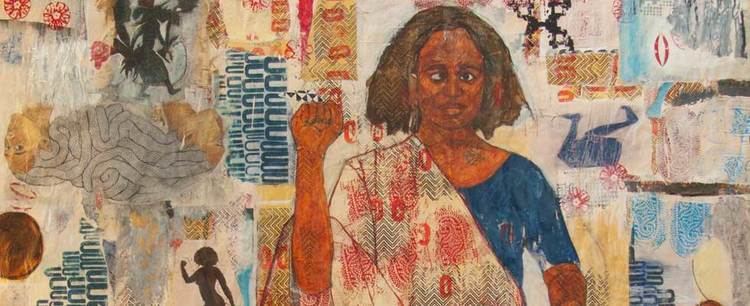 | ||
Born 1976 Alma mater Hampshire College, University of Chicago Similar Gayleen Aiken, Laylah Ali, Laura Myntti | ||
State of the art spotlight lecture mequitta ahuja
Mequitta Ahuja (born 1976) is a contemporary American painter of African American and South Asian descent who resides in Baltimore, Maryland. Ahuja creates self-described feminist works of self-portraiture that involve costumes, props, and poses. Her work appropriates works of myth and legend, such as fifteenth century Persian manuscript and Mughal miniature paintings to create a sort of "identity fabrication."
Contents
- State of the art spotlight lecture mequitta ahuja
- Mequitta ahuja working with traditional images
- Early life
- Career
- Works
- Exhibitions
- Selected collections
- References
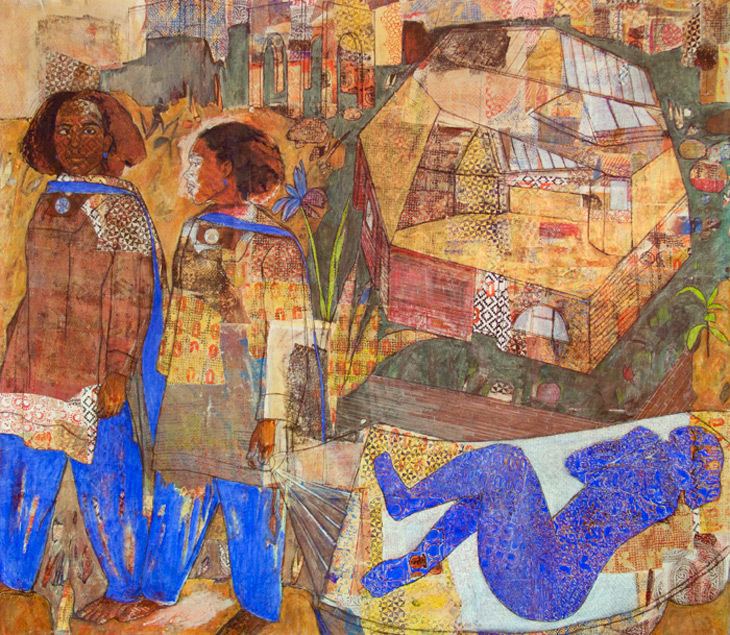
Mequitta ahuja working with traditional images
Early life
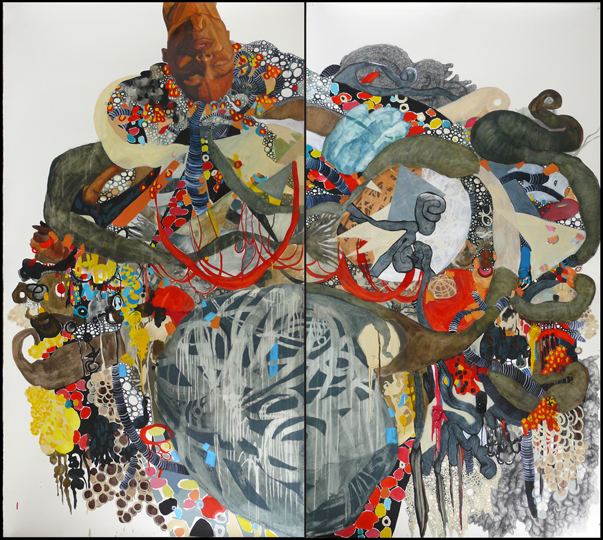
Growing up, Ahuja had little contact with the African American community and culture. This led to her search of identity which fuels her work today.
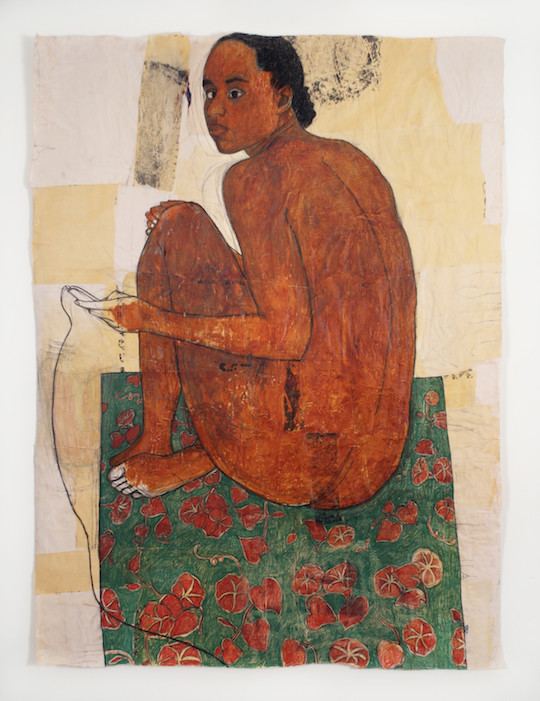
She received her BA at Hampshire College in Amherst, Massachusetts in 1998, and her MFA at University of Illinois at Chicago in 2003, where she was mentored by contemporary artist Kerry James Marshall.
Career
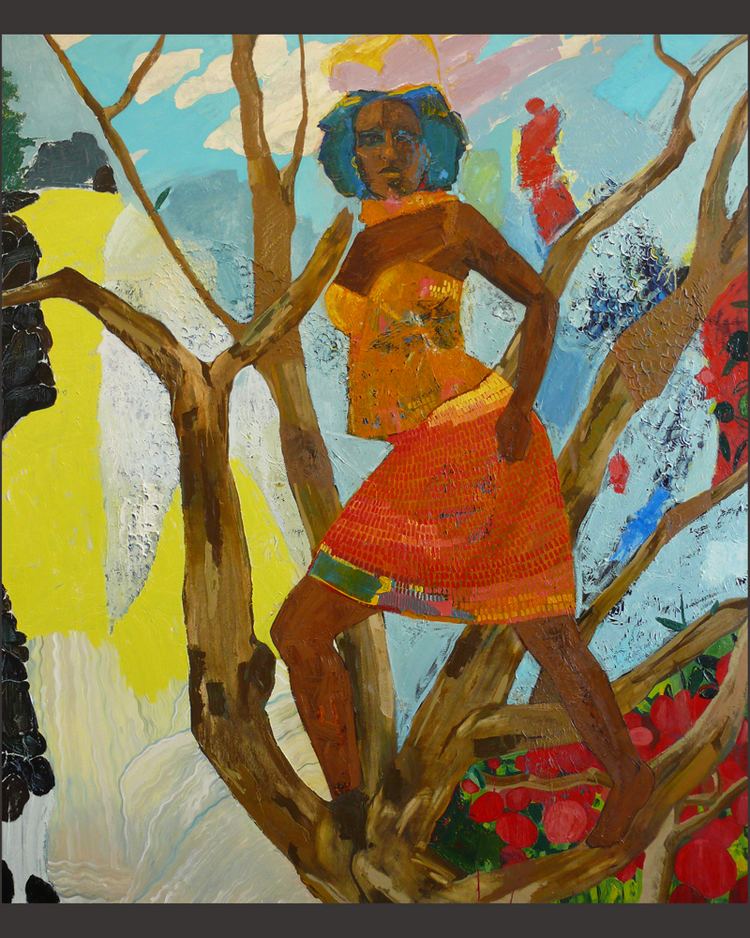
In 2007, in Ahuja's debut exhibition in New York city, New York Times art critic Holland Cotter said of Ahuja's work, "Referring to the artist's African-American and East Indian background, the pictures turn marginality into a regal condition". Ahuja's art explores the social construction of issues such as race, gender, and identity through a technique of self-portraiture. To create her paintings, Ahuja relies on a three-step process that involves performance, photography, and drawing/painting. Ahuja begins by developing a series of performances involving costumes, props, and poses. With the aid of a remote shutter, she then photographs her performances and documents them as "non-fictional source material." Finally, she incorporates these photographs into her invented material, resulting in her completed self-portraits.
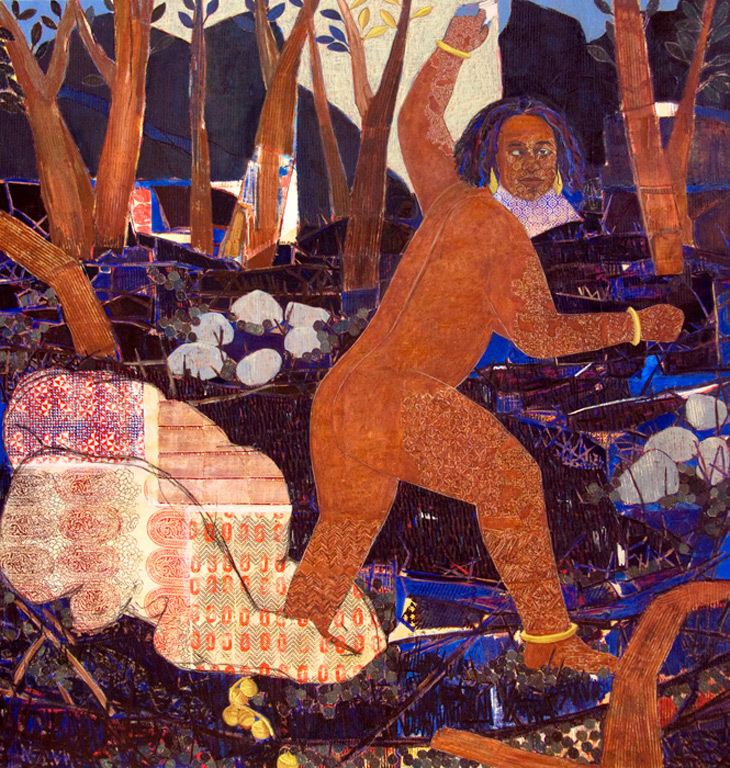
Ahuja has discussed her paintings as being feminist, referring to the assertive, self-sufficient female presence prevalent in her work, and frequently turns to her African American and South Asian roots in her consideration of identity issues. She states that through her art, "I feel I can have relationships to these groups on my own terms". In 2007, Ahuja was included in the exhibition Global Feminisms at the Brooklyn Museum of Art, and in 2009 her painting "Dream Region" was featured as the cover of the book War Baby/Love Child: Mixed Race Asian American Art. Her work has been exhibited throughout the United States as well as in Paris, Brussels, Berlin, India and Dubai, and she has been the recipient of multiple awards for her art, including the Tiffany Foundation Award in 2007, a 2009 Joan Mitchell Award, and a 2008 Houston Artadia Prize. In 2010, Ahuja was profiled as an "Artist to Watch" in the February edition of ArtNews.
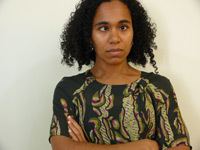
Ahuja appropriates ancient works of myth and legend, such as the fifteenth century Persian manuscript and Mughal miniature paintings, into her own commitment to certain kinds of identity fabrication. She articulated her own artistic style as "Of primary concern to me is the agency we have to self-invent and self-represent... creative processes that are necessarily bricolage. We draw on personal and cultural history as well as our creative imaginations". In her projects "Autocartography I" and "Rhyme Sequence: Wiggle Waggle", the pictorial styles of the paintings are cross-cultural as well as autobiographical.
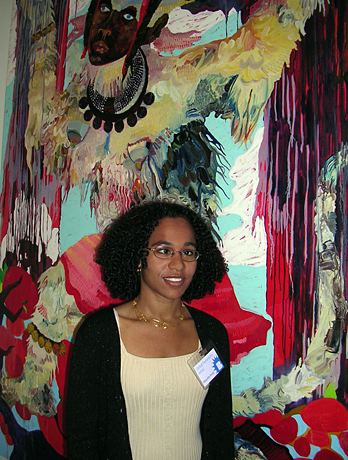
Ahuja cites her work as "automythography," an expansion of feminist Audre Lorde's "biomythography." Ahuja describes authomythography as a "combination of personal narrative with cultural and personal mythology."
Ahuja often paints over her own work, regarding failed paintings as an opportunity, which "allows for the sort of things you can't plan for." Ahuja is also interested in the process, building surfaces by painting, stamping to create a complex surface. "I'm thinking of the ground as a cultural space. Instead of starting with the plain page, I'm starting it with this layer of culture so that when I'm building my imagery, it's really a wrestle between the figure and the ground. In the end, there's this integrated, stitched together element between them. . . I'm interested in mixing those traditions: flatness of space, but also some perspectival space and depth into the surface. I think that's where we are in painting. I think we, as artists, now have free range to take what we want from history."
Works
In 2008, Ahuja created Tress IV, with the aim to convert the image of African American hair to a "space of infinite creative possibilities or generative possibilities." Ahuja believes that African American hair is often weighted down with "personal and cultural history." By exaggerating the image of African American hair, it shows the value that hair has in the lives of black people and how they are constantly evolving the standard of beauty, moving away from a more Eurocentric to Afrocentric idea of beauty. Her two central concerns during this period were "self-invention and self-representation."
Ahuja was compelled to study myths, folklore and ancient works as a way to discuss how they are represented in art. She combines her own cultural heritage with the Western art canon to explore stories and imagery related to her experience.
